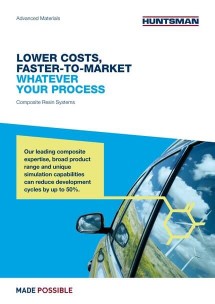Wet Compression Molding
Compared to other direct liquid processes, Wet Compression Molding (WCM) enables faster cycle times, and thus higher productivity. The main automotive application is for structural parts of the body-in-white, such as spars. Huntsman offers resin systems specifically designed for WCM, and our innovative DFCM process greatly improves the quality of the composite parts versus standard WCM.


